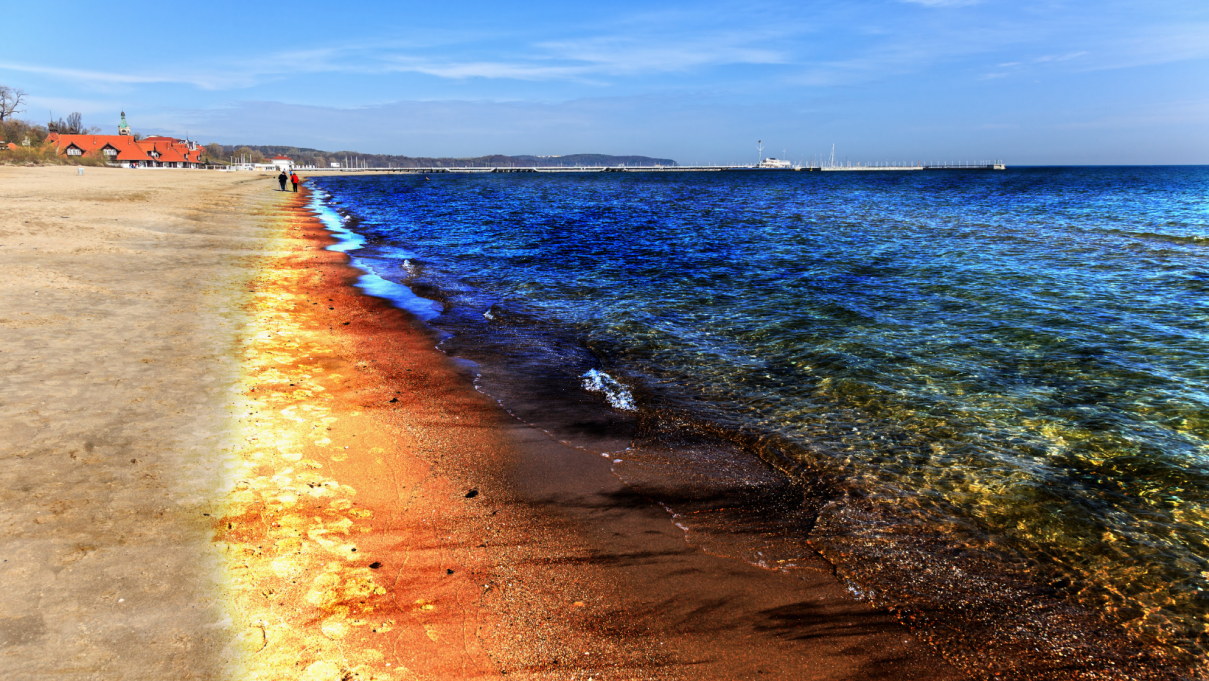
Bioremediation is a biotechnological process characterized by the use of microorganisms (invisible to the naked eye) that aims to remediate / clean contaminated sites (e.g., soil, surface water, groundwater). In this process, the microorganisms “eat” the contaminant and degrade it into simple and innocuous compounds such as carbon dioxide and water. Microorganisms of course, benefit from this degradation as they use the contaminant as a source of food and energy.
Bioremediation is carried out through the implementation of three strategies or a combination of them: natural attenuation, biostimulation, and bioaugmentation. In natural attenuation, the only thing that is done is to monitor the degradation of the contaminant is taking samples of the contaminated site to know if the concentration of the contaminant has decreased over time. On the other hand, in biostimulation, people intervene beforehand to improve the "conditions" that can affect the growth of native microorganisms present in the site (they are called native because they come from the environment). For example, in a site contaminated with oil (which is mostly carbon), fertilizers are added to provide other macronutrients such as nitrogen or phosphorus. Biostimulation doesn’t mean that only nutrients are added, No! We can play with other parameters such as the solubility of the contaminant (how available it is for microorganisms), temperature, humidity, and aeration, among others. Finally, in bioaugmentation, there is some direct intervention involved as well. However, in addition to adjusting the "conditions", non-native microorganisms (external) are also added that will do the work of eating the contaminant of interest. Interesting, right? Knowing whether or not a particular microorganism degrades a particular contaminant takes many years of study in the laboratory.
Although bioremediation gives us a cleaner and more environmentally friendly solution to cleaning up contaminates than other physical-chemical alternatives, we are at the mercy of microorganisms. Due to their small size and slow growth rate, the degradation times of the pollutants are delayed, from months to years. In addition, the type of contaminants also influences how successful this process is. We can remediate sites contaminated with oil, solvents, pesticides, explosives, and even heavy metals. In theory, oil contamination, something that forms naturally on the planet, would be easier to degrade by the action of microorganisms. This is because microorganisms "know" the contaminant because they have been in contact with it for centuries. However, a contaminant made by men, such as the explosive TNT, turns out to be “unknown” to microorganisms and, therefore, more difficult to degrade.
A historic case was the spill of 11 million gallons of oil from the Exxon Valdez in Alaska in 1989. This case left several important lessons about the response capacity of organizations in the face of an environmental disaster and the lack of legislation at that time. Although various cleaning methods were used, the Environmental Protection Agency (EPA) of the United States evaluated bioremediation, specifically applying soluble nutrients, to favor the growth and metabolism of microorganisms. After this serious incident that affected the life, cleanliness, and conservation of plants and animals, the Oil Pollution Act of 1990 was approved, which improved the regulations of oil tankers.
Thanks to bioremediation, many contaminated sites have been cleaned up and restored under programs such as the EPA Superfund. However, even this technology is undervalued in countries like Colombia, where science is one of the last priorities of the government.
References
Atlas, R. M., & Hazen, T. C. (2011). Oil biodegradation and bioremediation: a tale of the two worst spills in U.S. history. Environmental science & technology, 45(16), 6709–6715. https://doi.org/10.1021/es2013227
EPA. (2001). Use of Bioremediation at Use of Bioremediation at Superfund Sites. Taken from: https://www.epa.gov/sites/default/files/2015-08/documents/bioremediation_542r01019.pdf
EPA (February 14th 2022). Exxon Valdez Spill Profile. Taken from: https://www.epa.gov/emergency-response/exxon-valdez-spill-profile
EPA (February 14th 2022). Bioremediation of Exxon Valdez Oil Spill. Taken from: https://archive.epa.gov/epa/aboutepa/bioremediation-exxon-valdez-oil-spill.html
More for you
Support Young Creators Like This One!
VoiceBox is a platform built to help young creators thrive. We believe that sharing thoughtful, high-quality content deserves pay even if your audience isn’t 100,000 strong.
But here's the thing: while you enjoy free content, our young contributors from all over the world are fairly compensated for their work. To keep this up, we need your help.
Will you join our community of supporters?
Your donation, no matter the size, makes a real difference. It allows us to:
- Compensate young creators for their work
- Maintain a safe, ad-free environment
- Continue providing high-quality, free content, including research reports and insights into youth issues
- Highlight youth voices and unique perspectives from cultures around the world
Your generosity fuels our mission! By supporting VoiceBox, you are directly supporting young people and showing that you value what they have to say.





